Types of daffodils: the best varieties for brilliant spring color
Find out about all the different types of daffodils you can get and try out a new variety for a stunning spring splash

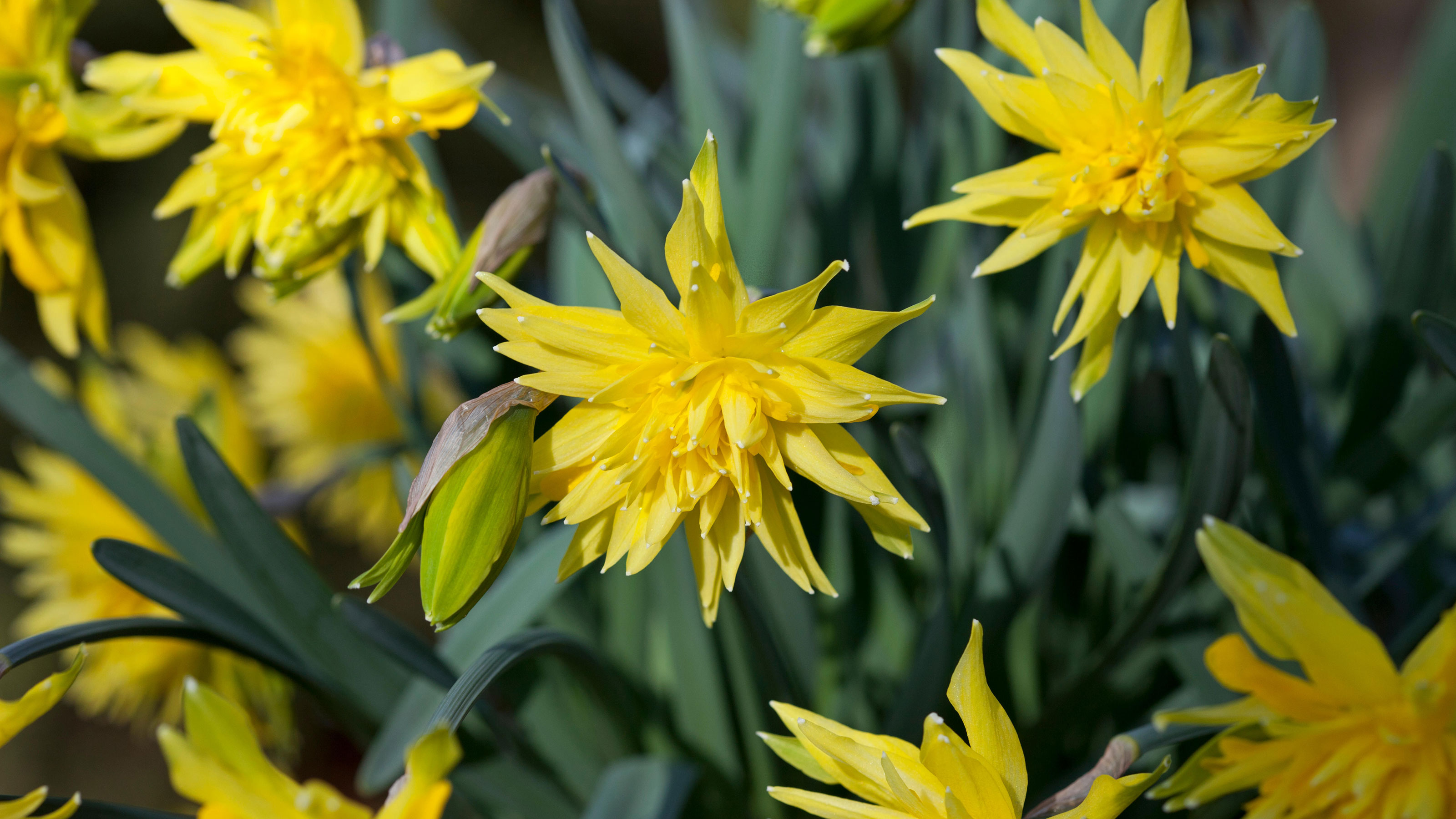
There are so many types of daffodils to choose from that they are split up into many different groups. They all have features in common, but organising them in this way helps us understand what kind of daffodil to choose.
All daffodils grow from bulbs that look a little like onions or shallots, and they all have long narrow green leaves in early spring that die down in summer. The flower stems also emerge in spring, sometimes one and sometimes more from each bulb, and carry anything from one to a dozen or more flowers.
The flowers all have the same basic two-part structure. They all have a trumpet or a cup (the corona) which is backed by a ring of six petals (the perianth segments). The technical terms are not really necessary but it helps to know what they mean as they are sometimes used on websites and in catalogues.
Once you know the difference between types of daffodils, you can pick the best ones for your space and get planting daffodil bulbs for spring.
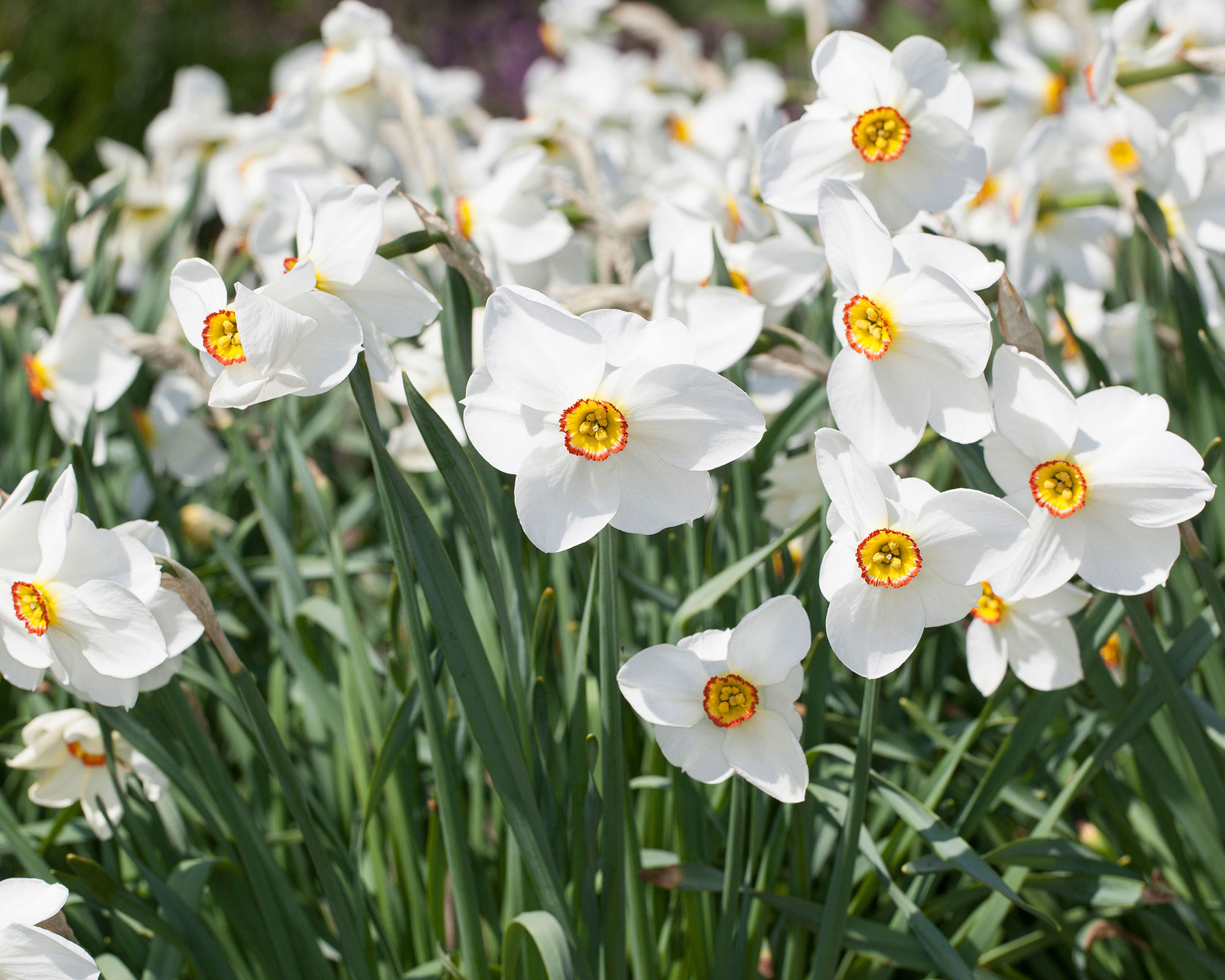
Types of daffodils: 15 favorite varieties to choose from
Most daffodils are reliably hardy, happy in sun or a little shade, spread steadily, and thrive in most soils. A regular feature in most spring gardens, they can be planted in clumps in the garden, as well as in rows for cutting. Daffodil bulbs can also be planted in grass and allowed to spread naturally. They are well worth growing in containers too. This means they're a great all-round choice when it comes to planting bulbs for spring.
'Daffodils are among the easiest plants to grow, and the rewards far outweigh the work,' according to The American Daffodil Society. 'Of the major groups of bulbs, daffodils are the only truly reliable perennials, and the blooming season can be as long as two months if the right varieties are chosen.'
Daffodils really are one of the best spring flowering plants you can pick.
Daffodil groups
1. Large-cupped daffodils
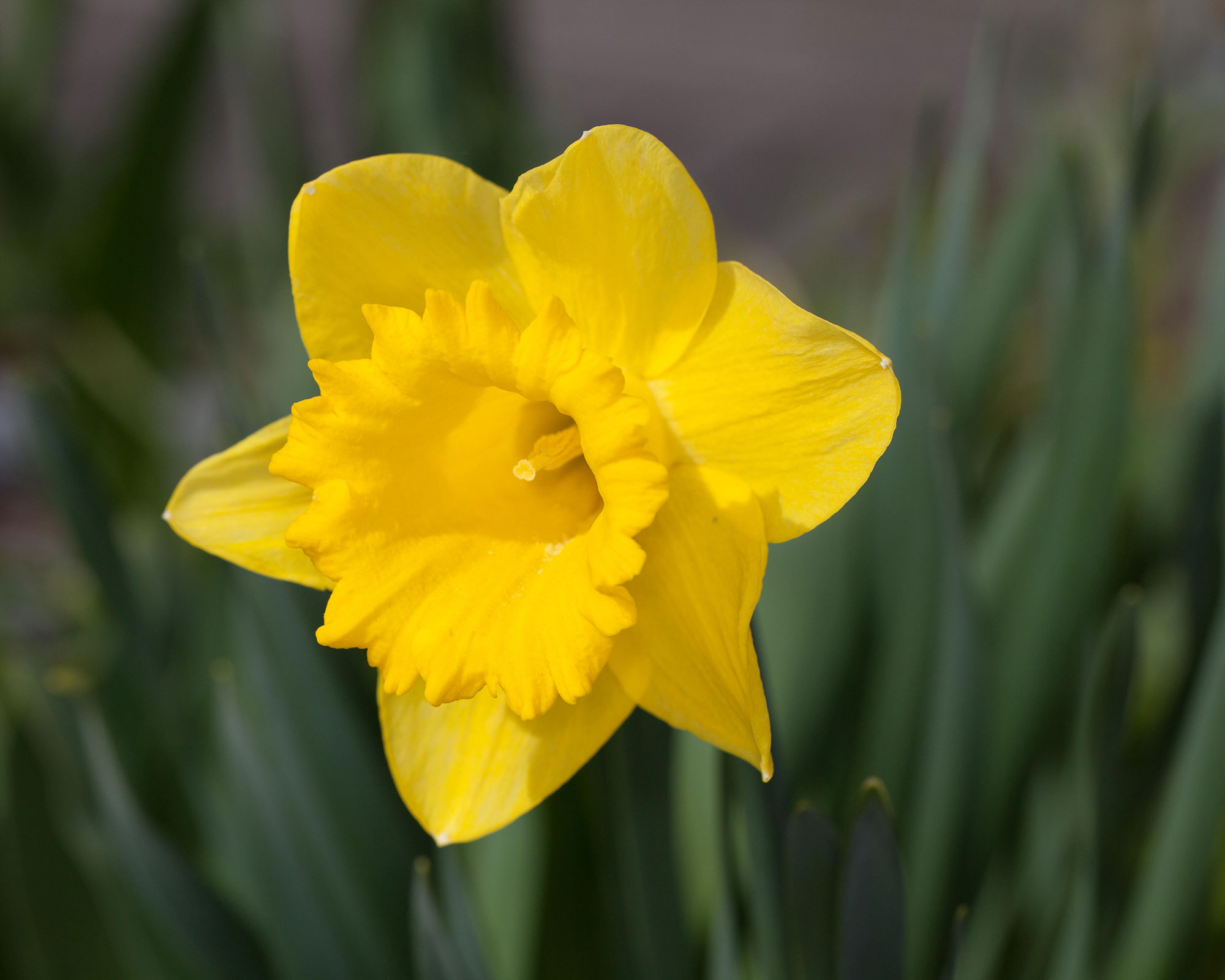
- Hardiness: USDA Z4 (RHS H6)
- Height: 10-16in (25-40cm)
Large-cupped daffodils have one flower per stem, and the cup is like a short trumpet, always shorter than the petals but never less than one third of the length. The cup and petals may be the same color, or different.
Popular varieties include ‘Bantam’, which has rich yellow petals and a red-rimmed gold cup, and ‘Carlton’ (shown) with its big bold yellow petals and cup.
Go for large-cupped types of daffodils if you want to include colorful clumps as part of your garden border planting ideas. They're also a good choice for spring containers in sheltered situations.
- Buy large-cupped 'Carlton' daffodils in the US: view at Dutch Bulbs
- Buy large-cupped 'Carlton' daffodils in the UK: view at Crocus
2. Double daffodils
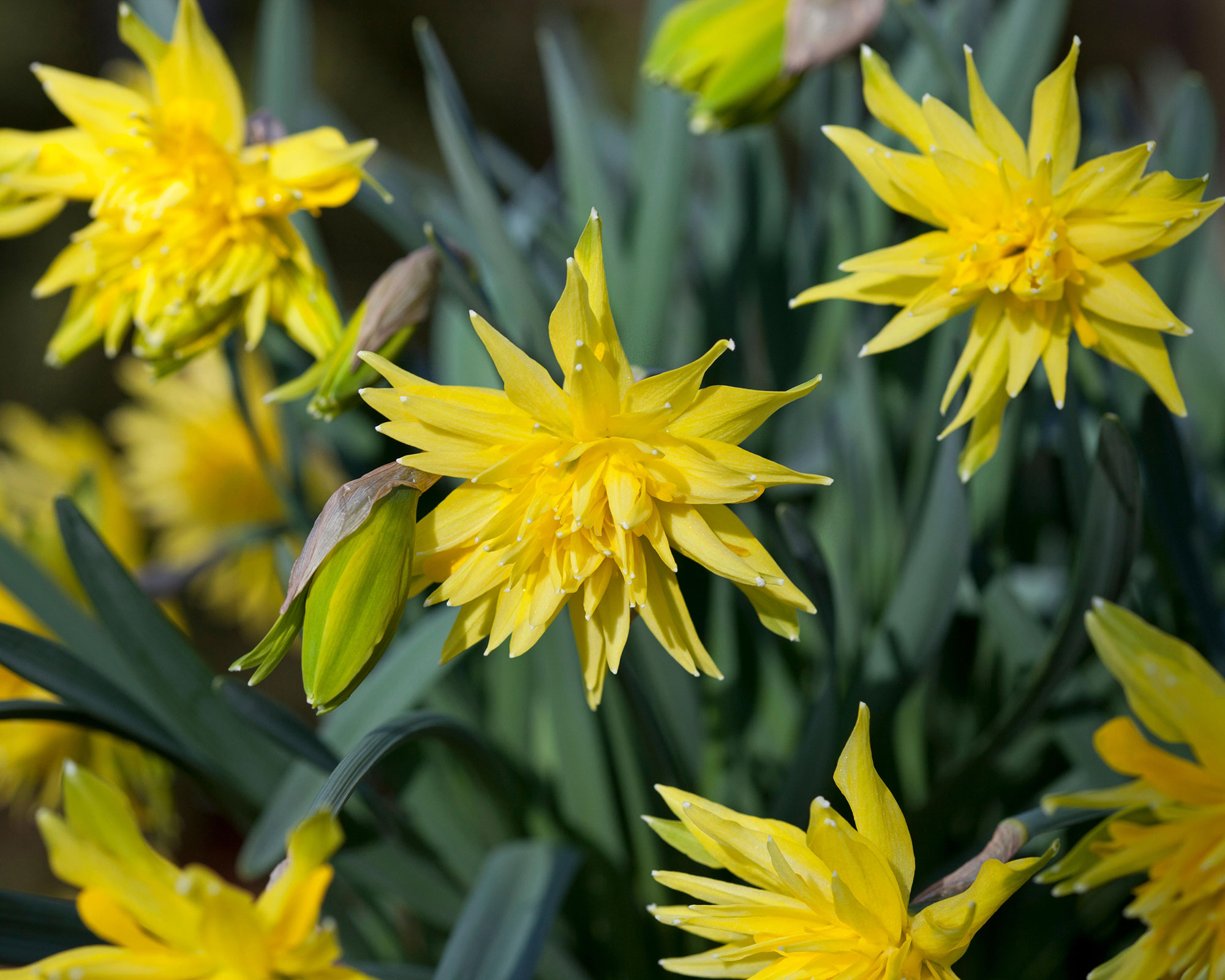
- Hardiness: USDA Z4 (RHS H6)
- Height: 6-20in (15-50cm)
A diverse group in which the flowers have extra petals or cups, or both, split into many segments, the stems carrying one large flower or a number of smaller flowers. Many of this variety of daffodils are scented too, so make a good choice for a sensory garden.
Choose from ‘Pencrebar’, with its fragrant yellow flowers on short stems, or ‘Rip van Winkle’ (shown), which develops a mass of slender yellow petals on short stems.
Double daffodil varieties are best planted in a sheltered place where the wind will not damage the heavy flowers.
- Buy double daffodil 'Rip van Winkle' in the US: view at Dutch Bulbs
- Buy double daffodil 'Rip van Winkle' in the UK: view at Thompson & Morgan
3. Triandrus daffodils
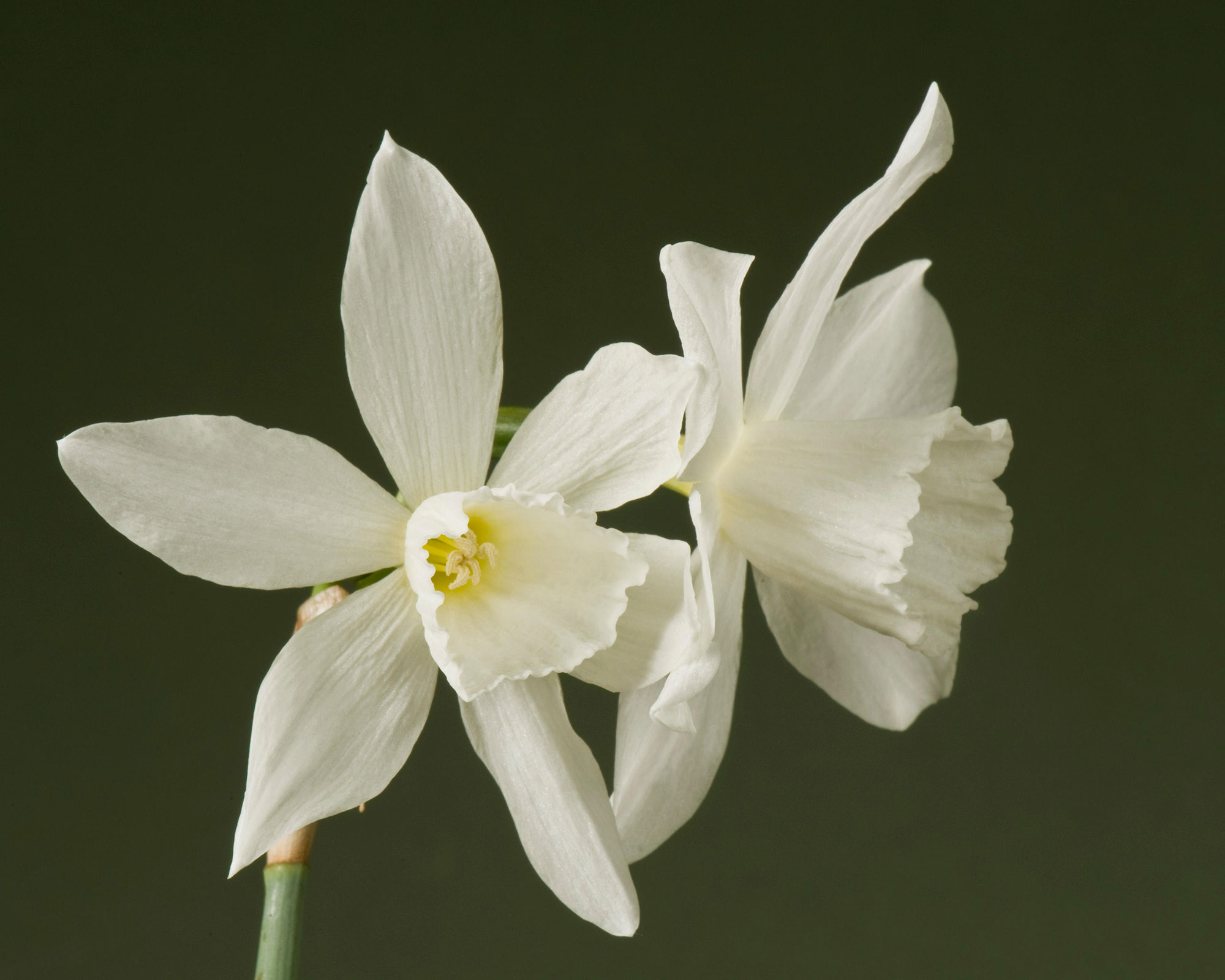
- Hardiness: USDA Z5 (RHS H6)
- Height: 8-14in (20-35cm)
Up to six small, slightly nodding flowers are carried on relatively short stems and feature short tubular cups and narrow, slightly reflexed petals.
‘Moonlight Sensation’ is primrose yellow fading to white, and has two or three flowers per stem, with up to five stems per bulb. ‘Thalia’ (shown) has up to four white flowers per stem, and is a late flowering variety.
Triandrus daffodils are good grown as a potful of one variety, and will also spread steadily at the front of a garden border.
- Buy Triandrus 'Thalia' daffodils in the US: view at Dutch Bulbs
- Buy Triandrus 'Thalia' daffodils in the UK: view at Primrose
4. Jonquil daffodils
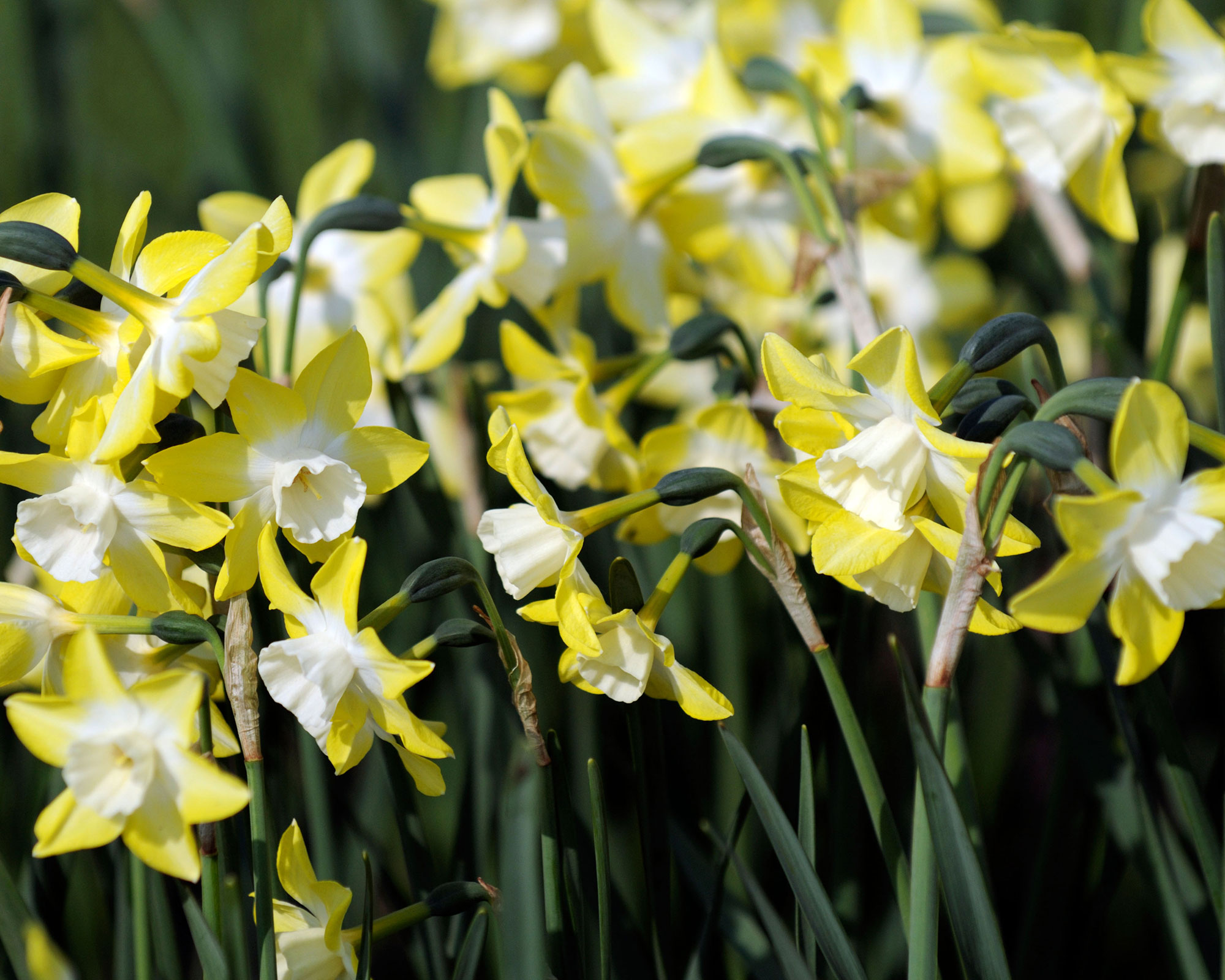
- Hardiness: USDA Z4 (RHS H6)
- Height: 6-10in (15-25cm)
Jonquil daffodils feature up to six, small-cupped, sweetly scented flowers per stem and are set against dark, unusually slender foliage allowing the flowers to show themselves off especially well.
‘Pipit’ (shown) has lime yellow petals with a similar cup that fades to white, while ‘Sundisc’ features elegantly rounded yellow flowers with a flared cup, and once planted increases rapidly.
Jonquil daffodils are one of the types of daffodils that look very pretty in individual garden planters, perhaps planted with a mix of violas or primroses, as well as cut and arranged in dainty posies.
5. Tazetta daffodils
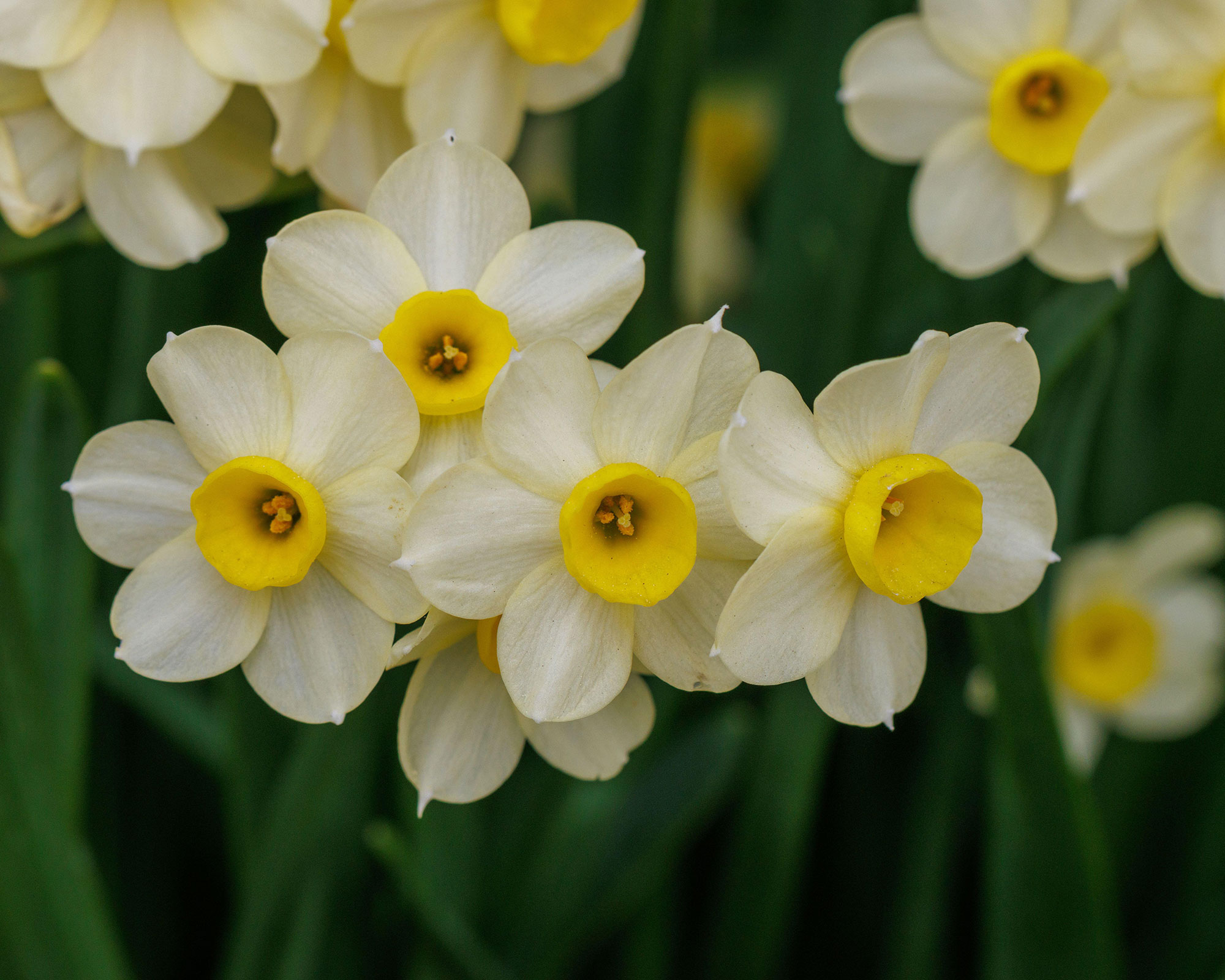
- Hardiness: USDA Z8 (RHS H6)
- Height: 6-16in (15-40cm)
With up to 12, slightly upward facing, usually sweetly scented flowers per stem, the larger the flowers are the fewer you get per stem.
‘Geranium’ has six scented flowers per stem, and the orange cups shine against the white petals. ‘Minnow’ (shown) is one of the scented types of daffodil bulbs, with creamy petals and lemon yellow cups.
The Tazetta variety is less hardy than other daffodils, but nevertheless is a vigorous grower. Some varieties can easily be forced for early flowering too.
- Buy Tazetta daffodil 'Minnow' in the US: view at Dutch Bulbs
- Buy Tazetta daffodil 'Minnow' in the UK: view at Crocus
6. Fragrant daffodils
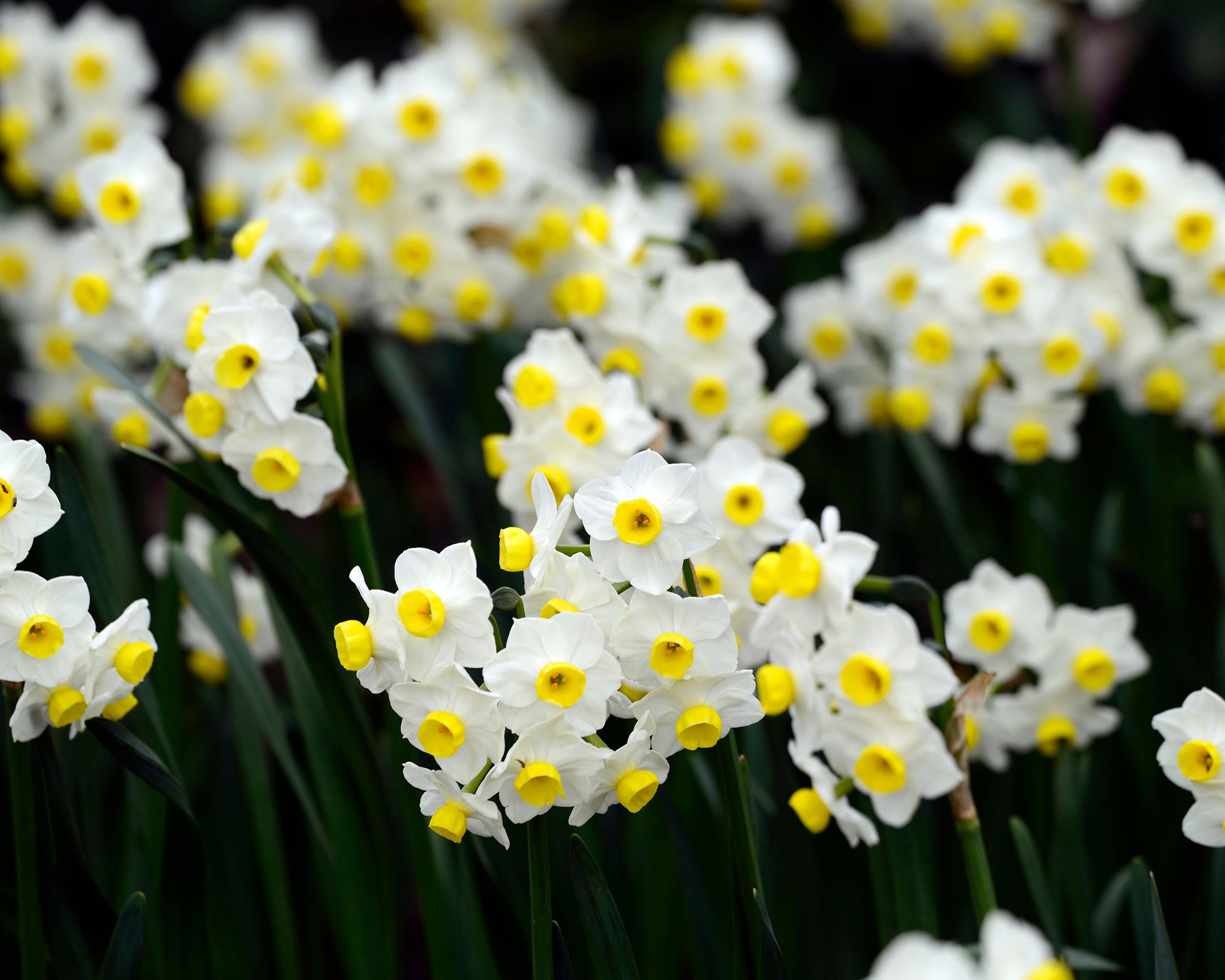
- Hardiness: USDA Z4-5 (RHS H6)
- Height: 9in-16in (23-40cm)
Fragrant types of daffodil bulbs are found in a number of groups, with a mix of different flower forms and colors.
‘Avalanche’ (shown) is a Tazetta variety that has up to 15 white flowers per stem paired with yellow cups. ‘Sir Winston Churchill’ is a double variety that features double white flowers with orange centers.
Fragrant daffodils are often best grown in pots, with a separate variety in each, so they can be placed where the scent can be most appreciated. You can also grow them in rows as they are one of the best cutting garden flowers too.
7. Bicolored daffodils
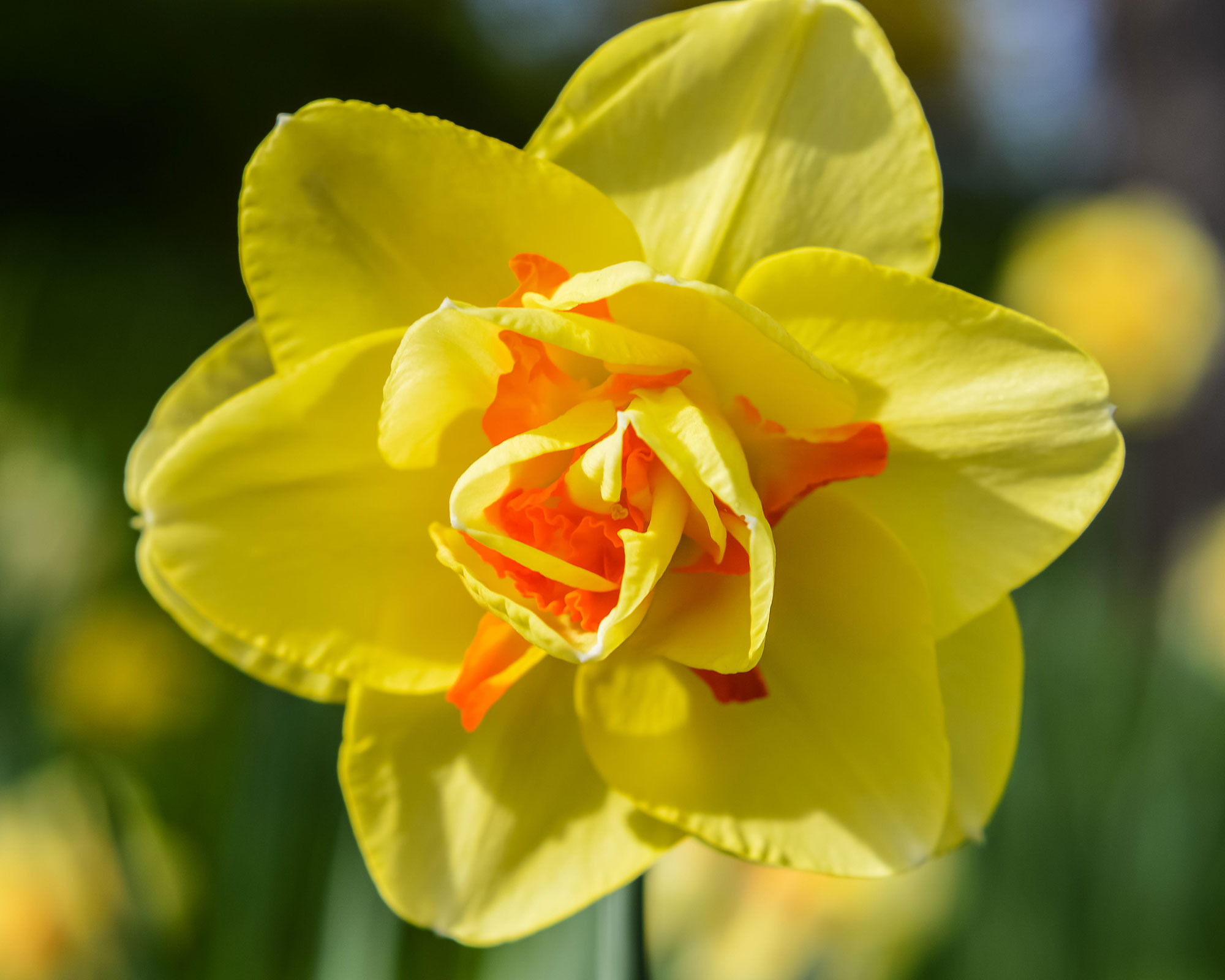
- Hardiness: USDA Z4-5 (RHS H6)
- Height: 6in-18in (15-45cm)
Varieties whose flowers feature two contrasting colors, or two harmonious pastel colors, are known as bicolored and are among the most effective types of daffodils you can grow as part of your flower bed ideas.
‘Kaydee’ has white petals and a bright orange-pink cup, and is a Cyclamineus variety (see definition below), while ‘Tahiti’ (shown) is a double variety with golden yellow petals mixed with shorter reddish orange petals in the center.
Varieties with brightly contrasting colors are best shown off in clumps or pots, while pastel bicolors are better with spring flowers such as primroses.
- Buy bicolored 'Tahiti' daffodils in the US: view at Dutch Bulbs
- Buy bicolored 'Tahiti' daffodils in the UK: view at Amazon
8. Split-corona daffodils
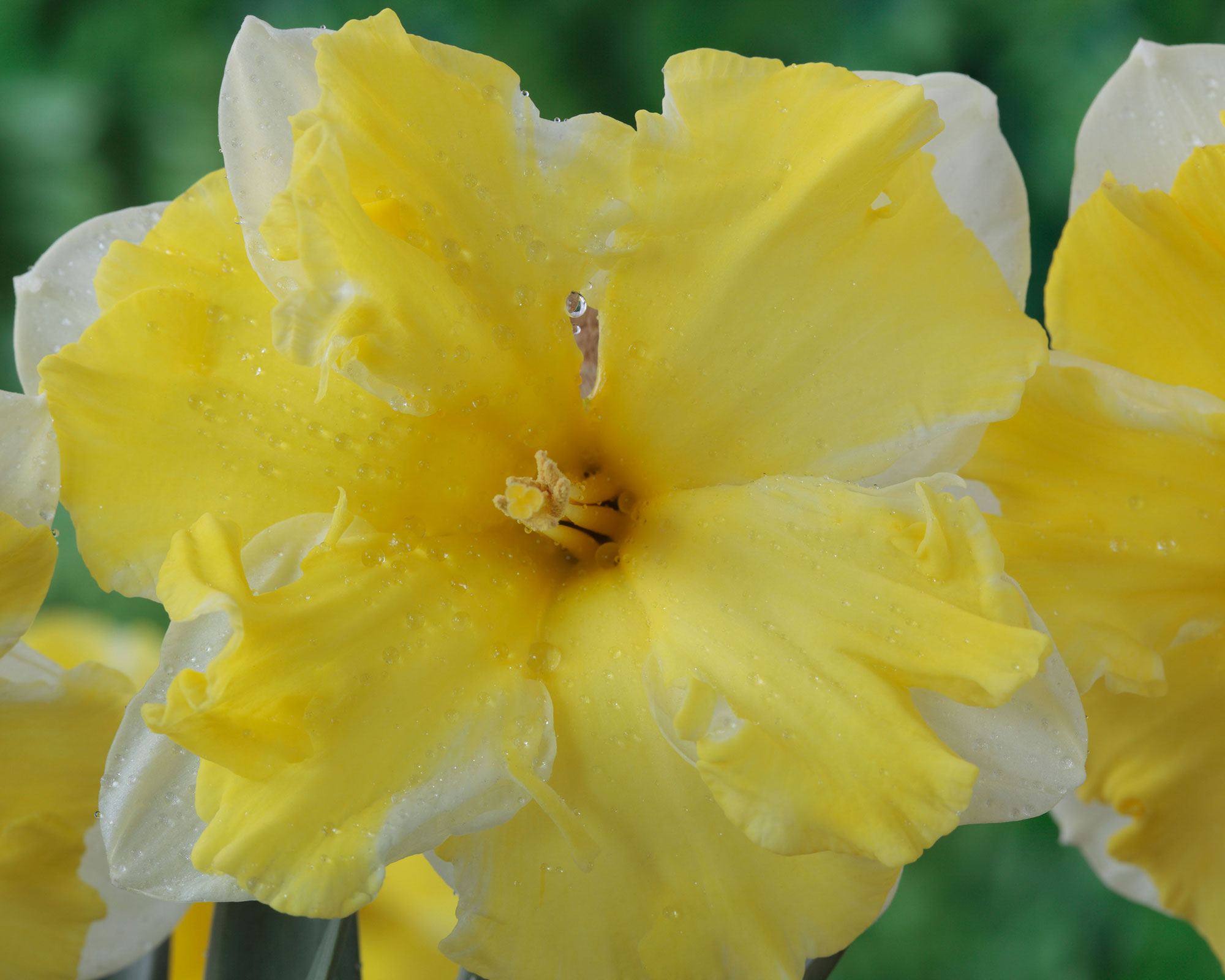
- Hardiness: USDA Z4 (RHS H6)
- Height: 10-16in (25-40cm)
These varieties have their trumpets split into narrow segments, often in contrasting colors, which are often laid back almost flat against the petals.
Popular varieties include ‘Cassata’ (shown), with a flared, pale yellow split trumpet set against white petals, and ‘Cum Laude’, which features white petals with a contrasting apricot-orange split trumpet.
Split-corona types of daffodils are best planted in pots as part of your patio gardening ideas, or towards the front of the border, where the unique structure of the flowers can be most admired.
- Buy split-corona 'Cassata' daffodils in the US: view at Amazon
- Buy split-corona 'Cassata' daffodils in the UK: view at J Parkers
9. Miscellaneous daffodils

- Hardiness: USDA Z4 (RHS H6)
- Height: 6-16in (15-40cm)
This is where types of daffodils that do not fit into other groups are placed, along with intermediate varieties that are often hybrids between varieties in other groups.
‘Tête-à-Tête’ is a dwarf variety with bright yellow petals and a paler trumpet, with two or three flowers per stem. ‘Toto’ (shown) has white swept-back petals and a pale yellow trumpet, with two or three flowers per stem.
These varieties are ideal for naturalising in small spaces, and are also good mixed into your pots to add stunning seasonal color.
Daffodils for containers
10. Small-cupped daffodils
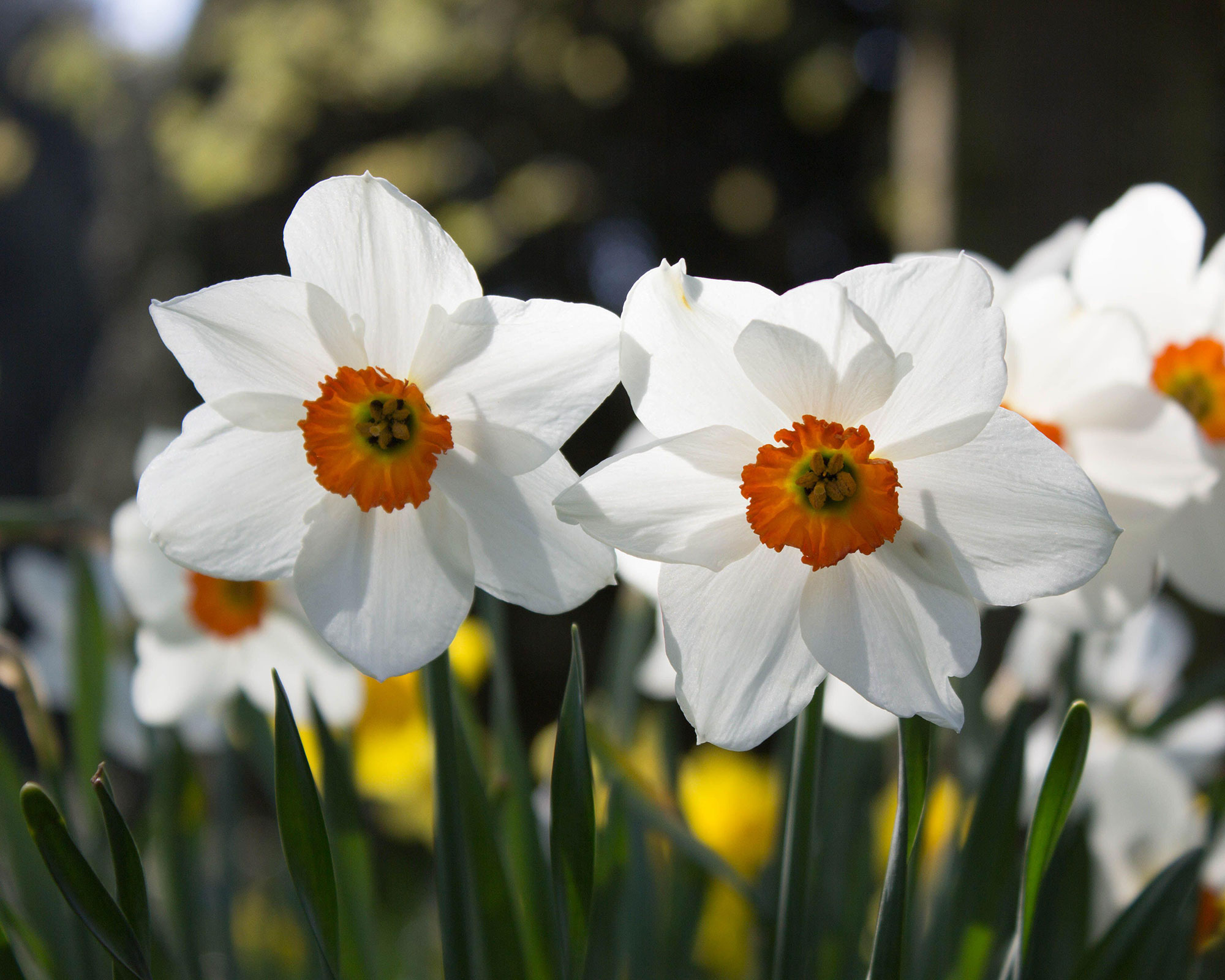
- Hardiness: USDA Z4 (RHS H6)
- Height: 14-18in (35-45cm)
Each stem carries one flower with the cup less than one third of the length of the petals. Cup and petals may be the same color, or different.
Popular varieties include ‘Barrett Browning’ (shown), with vivid orange-red cups and pure white petals, and ‘Polar Ice’, which has white petals with a small green centered cup, and is scented.
As well as being good for container gardening ideas, small-cupped varieties of daffodils can also be planted in drifts in borders or rough grass.
11. Cyclamineus daffodils
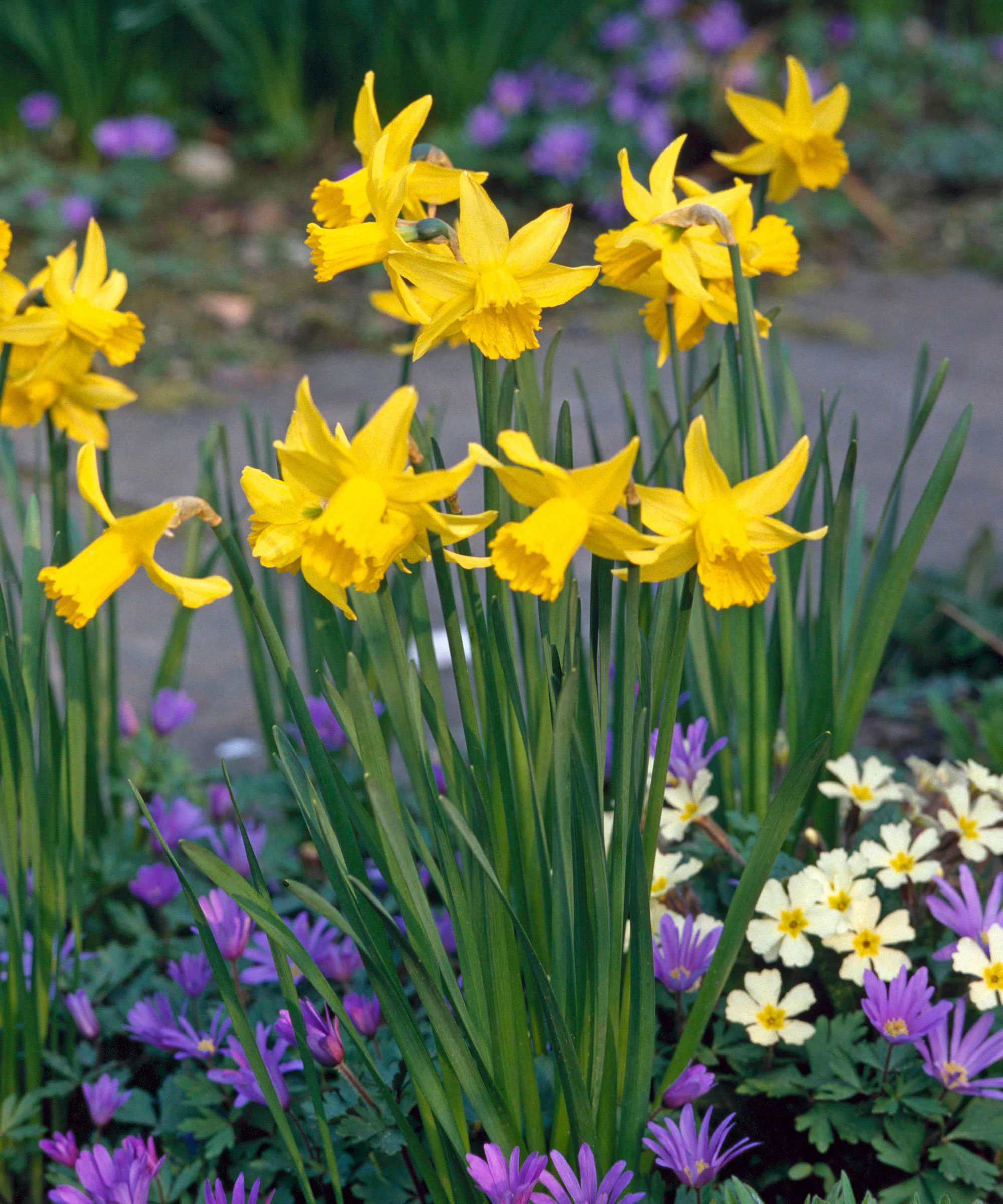
- Hardiness: USDA Z6 (RHS H6)
- Height: 10-16in (25-40cm)
Usually dwarf and early flowering, with one nodding flower per stem, the six petals of Cyclamineus daffodils are swept back in a similar way to those of a cyclamen.
Types of daffodils that fall into this category include ‘February Gold’ (shown), an early, very prolific and vigorous grower with bright yellow cup and petals, and ‘Jack Snipe’, which has creamy petals with a primrose yellow cup.
This variety of daffodil is good in small containers, in lightly shaded flower gardens partnered with hellebores, and also as early cut flowers.
12. Trumpet or longcup daffodils
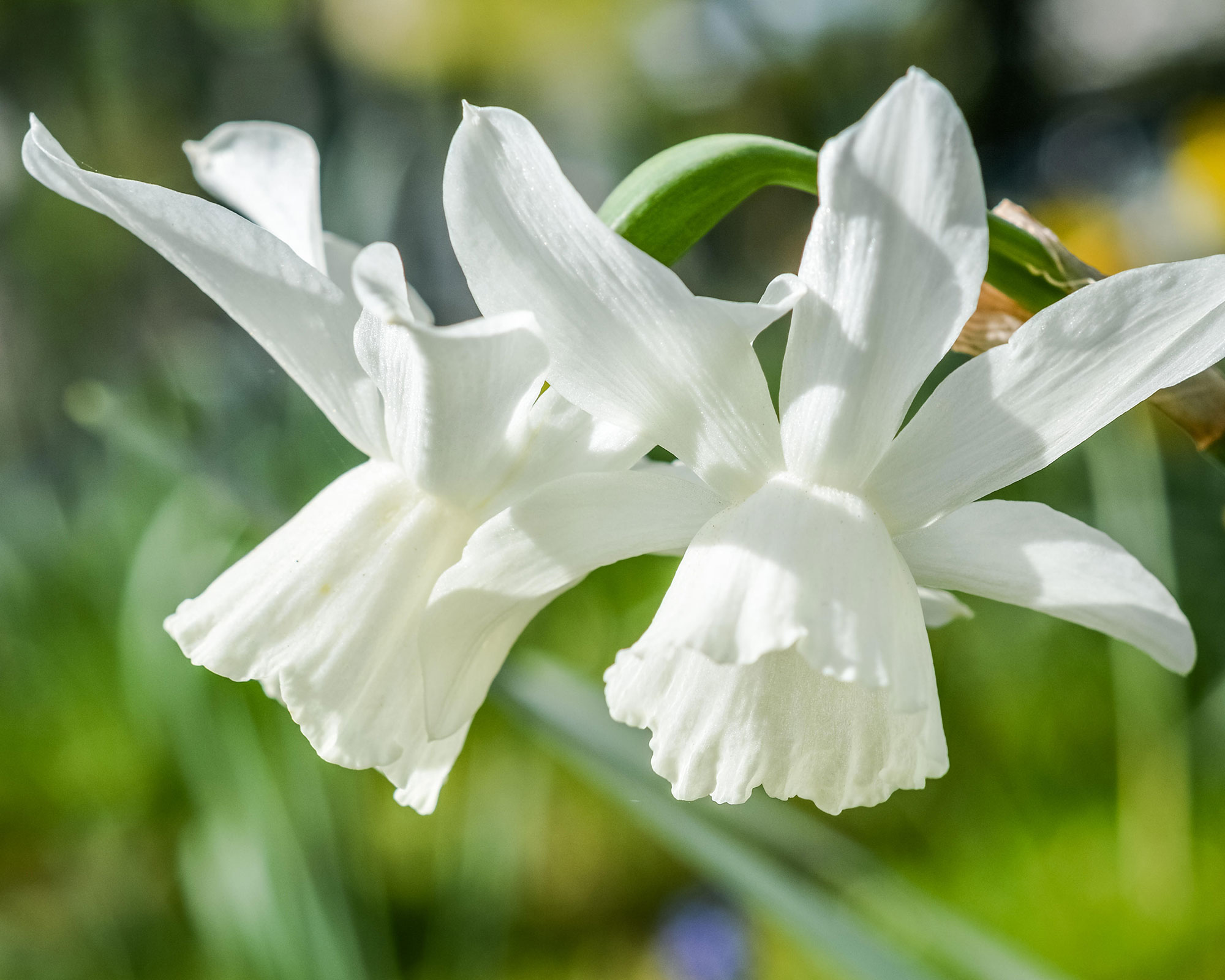
- Hardiness: USDA Z4 (RHS H6)
- Height: 14-18in (35-45cm)
The classic daffodil with flowers carried singly on individual stems and each flower with a trumpet as long as the petals behind, or longer. Trumpet and petals may be the same color, or different colors.
Popular varieties include ‘Elka’, which has white petals with a pale yellow trumpet that fades to white, and ‘Mount Hood’ (shown), with creamy petals and trumpet that also fades to white.
These types of daffodils are good for bold clumps in borders, in containers and in a sheltered spot.
- Buy 'Mount Hood' trumpet daffodils in the US: view at Nature Hills
- Buy 'Mount Hood' trumpet daffodils in the UK: view at Farmer Gracy
Daffodils for naturalising
13. Bulbocodium daffodils
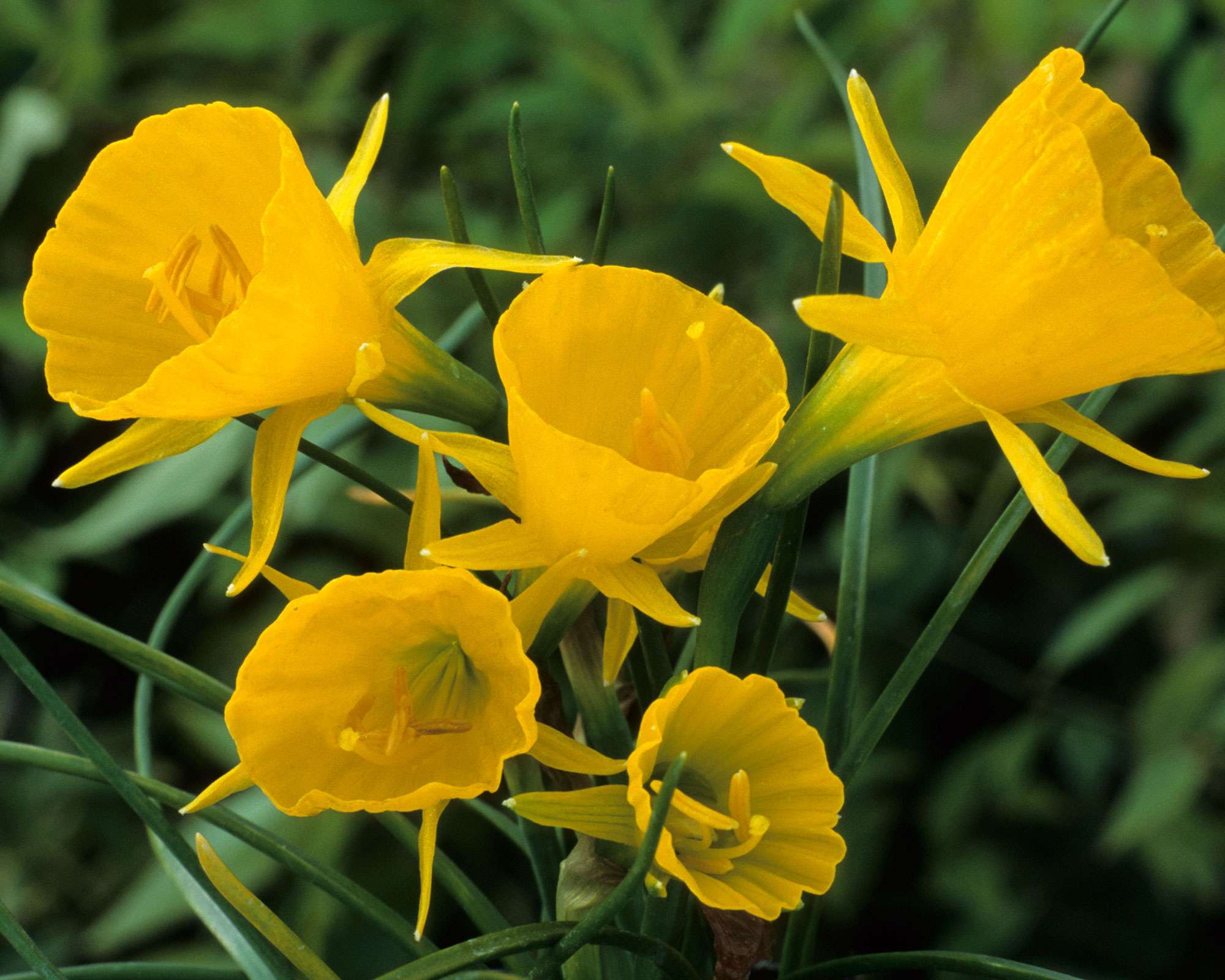
- Hardiness: USDA Z6 (UK H6)
- Height: 8in (20cm)
These are small, dainty, and early flowering types of daffodils with tiny, slender petals and a very showy cup like a flared petticoat in yellow or white shades.
‘Golden Bells’ (shown) is bright yellow, slightly upward facing, and each bulb has up to 15 flowers, while ‘White Petticoat’ is similar to ‘Golden Bells’ but with white petticoats instead.
As well as being naturalised in grass, Bulbocodium types of daffodils are also delightful in terracotta pots.
- Buy Bulbocodium 'Golden Bells' daffodils in the US: view at Nature Hills
- Buy Bulbocodium 'Golden Bells' daffodils in the UK: view at Thompson & Morgan
14. Species daffodils
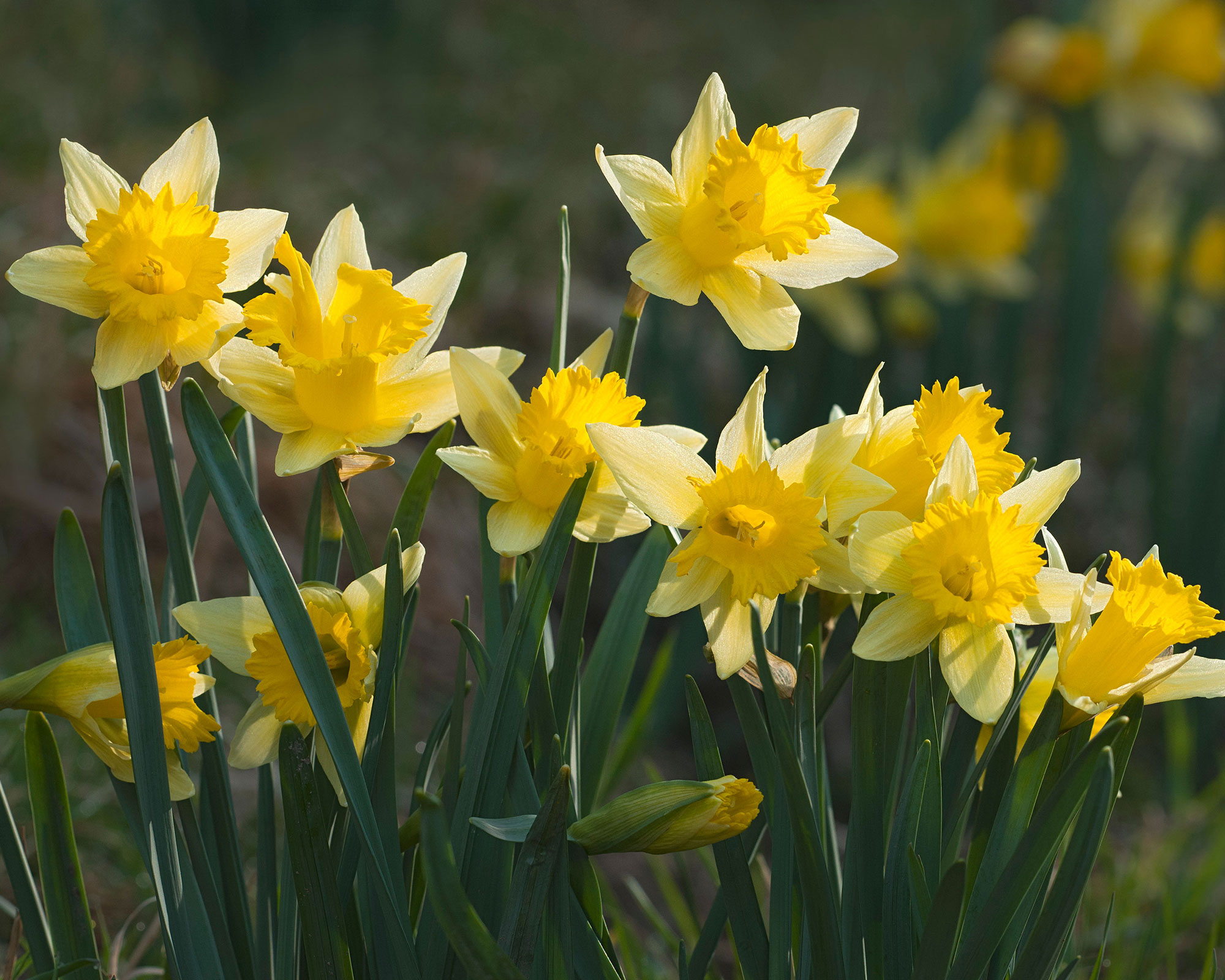
- Hardiness: USDA Z4-8 (RHS H4-6)
- Height: 6-15in (15-38cm)
A diverse group of wild daffodils covering from 30 to over 80 species depending on which expert you ask, these come from different parts of Europe, and flower at different times from fall to spring.
Narcissus moschatus has white backswept petals and a white trumpet, while Narcissus pseudonarcissus (shown) is the British native daffodil, with a pale yellow petals and a darker trumpet.
Different species of these types of daffodils need different treatments, with some preferring dryish, well-drained soil types.
15. Poeticus daffodils
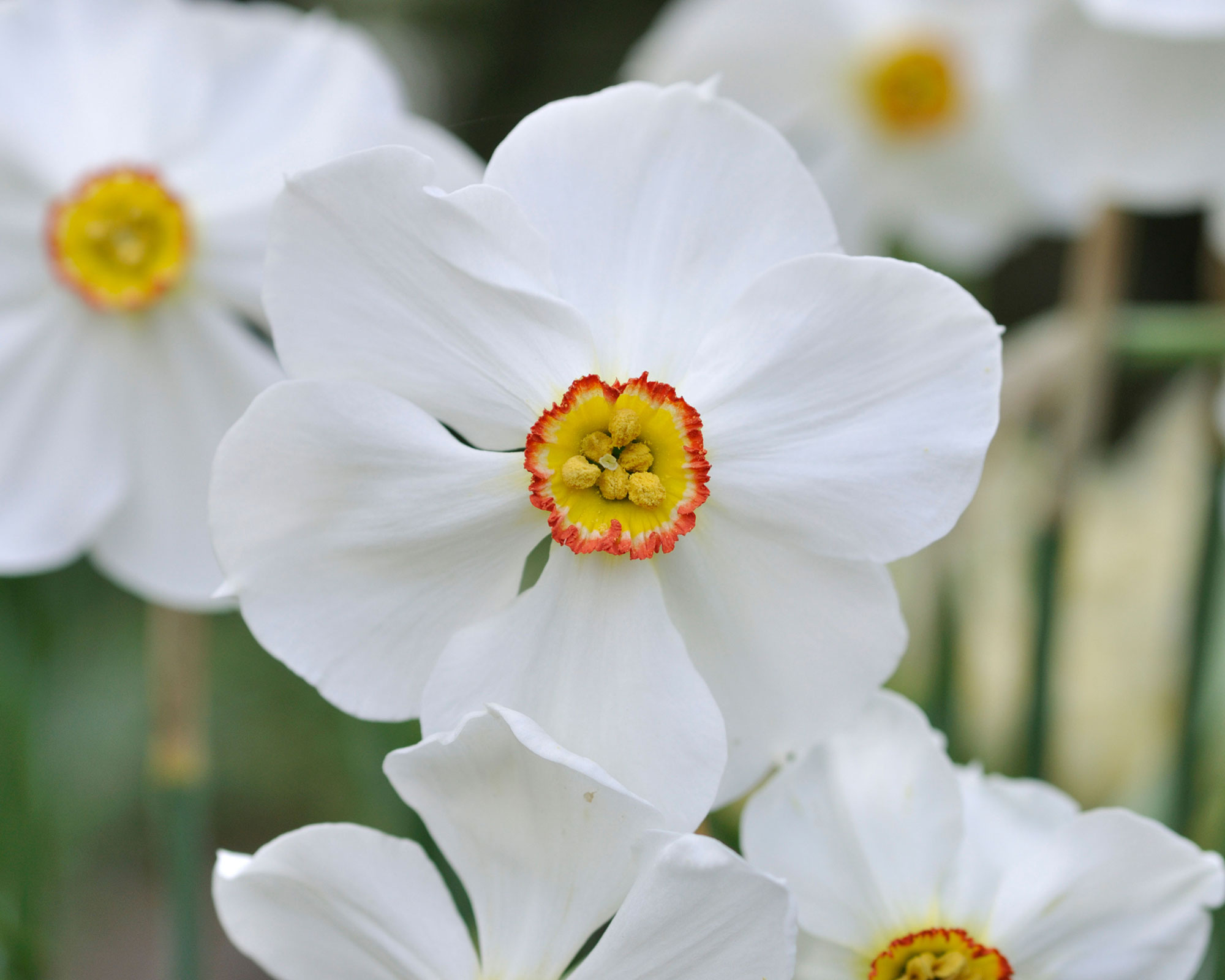
- Hardiness: USDA Z5 (RHS H6)
- Height: 16in (40cm)
Bright white petals allow the small, flattened colored cups to really shine, and their fragrance is perhaps the most powerful of all.
Popular varieties include ‘Actaea’ (shown), which has rounded white petals with a flat, red-edged yellow cup, and late flowering ‘Pheasant’s Eye’ with waved white petals with a yellow eye edged in orange.
Superb to naturalise in grass, mix Poeticus daffodils like the similar ‘Actaea’ and ’Pheasant’s Eye’ together for a long-lasting display.
Expert Q&As
How many different varieties of daffodils are there?
The latest count puts the number at more than 27,000 daffodil varieties. Many of these were first introduced a long time ago and have been superseded by newer and better varieties.
Plant breeders continue to develop new varieties as they look to bring us new colors and color combinations, increased vigor in the garden, and robustness and weather resistance.
With so many varieties available, especially by mail order, it can be difficult to choose. One way to help ensure you only grow the best varieties is to plant those that have been given the Award of Garden Merit (AGM) by the Royal Horticultural Society. You can trust daffodil varieties that have received the AGM to provide a colorful display and be easy to grow.
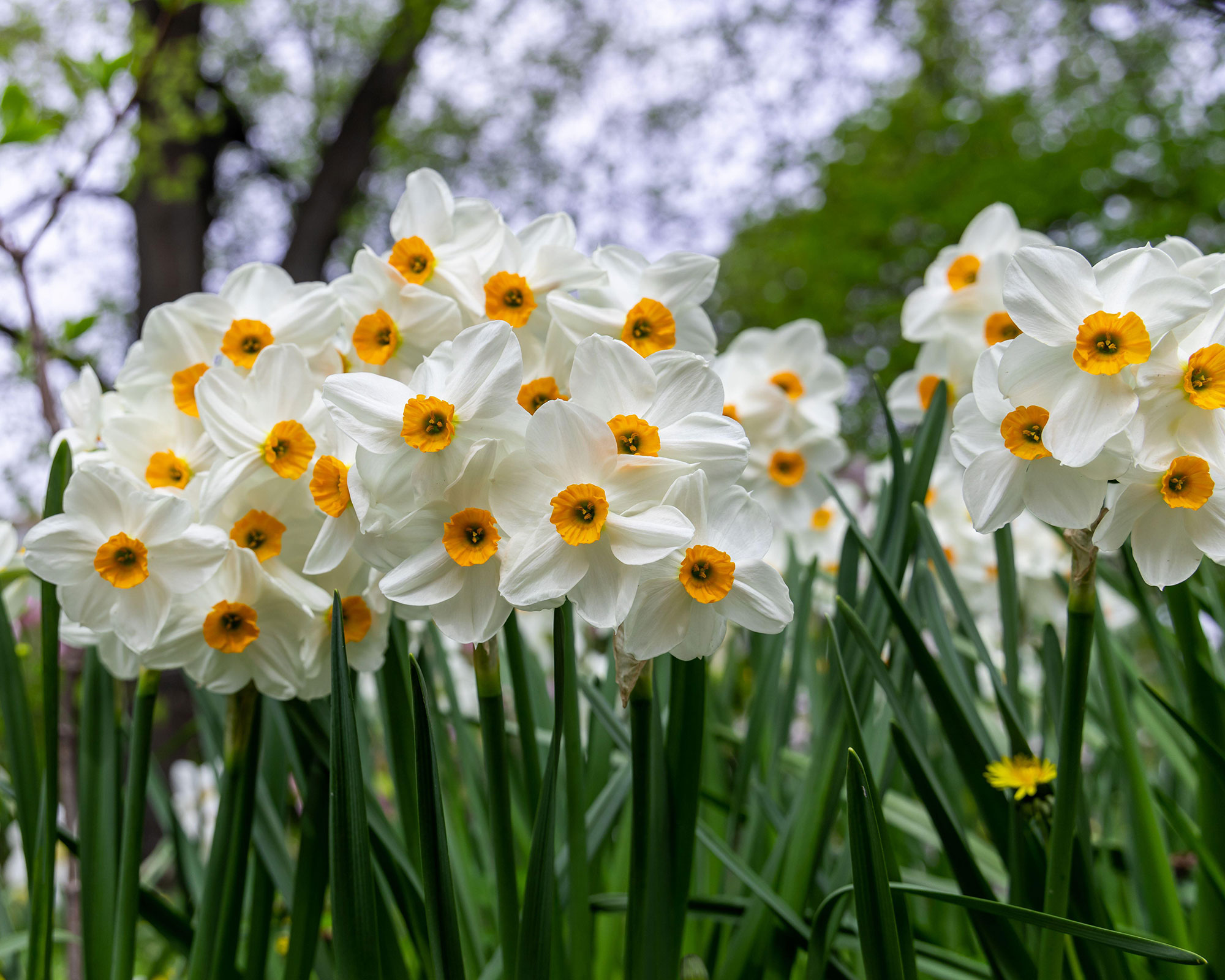
What is the most common type of daffodil?
The daffodils we most often see tend to come from one of three main groups: Trumpet daffodils, large-cupped daffodils and Tazetta daffodils. Varieties in all three groups are colorful, reliable and easy to grow.
From the trumpet daffodils the most often seen are ‘Dutch Master’ (yellow), ‘Mount Hood’ (fading to white) and ‘Rijnveld’s Early Sensation’ (yellow, very early).
In the large-cupped daffodils ‘Carlton’ (yellow), ‘Ice Follies’ (white) and ‘Precocious’ (white and pink) are popular.
When it comes to the Tazetta daffodils, ‘Cheerfulness’ (double white), ‘Geranium’ (white and orange) and ‘Minnow’ (cream and lemon) get the vote.
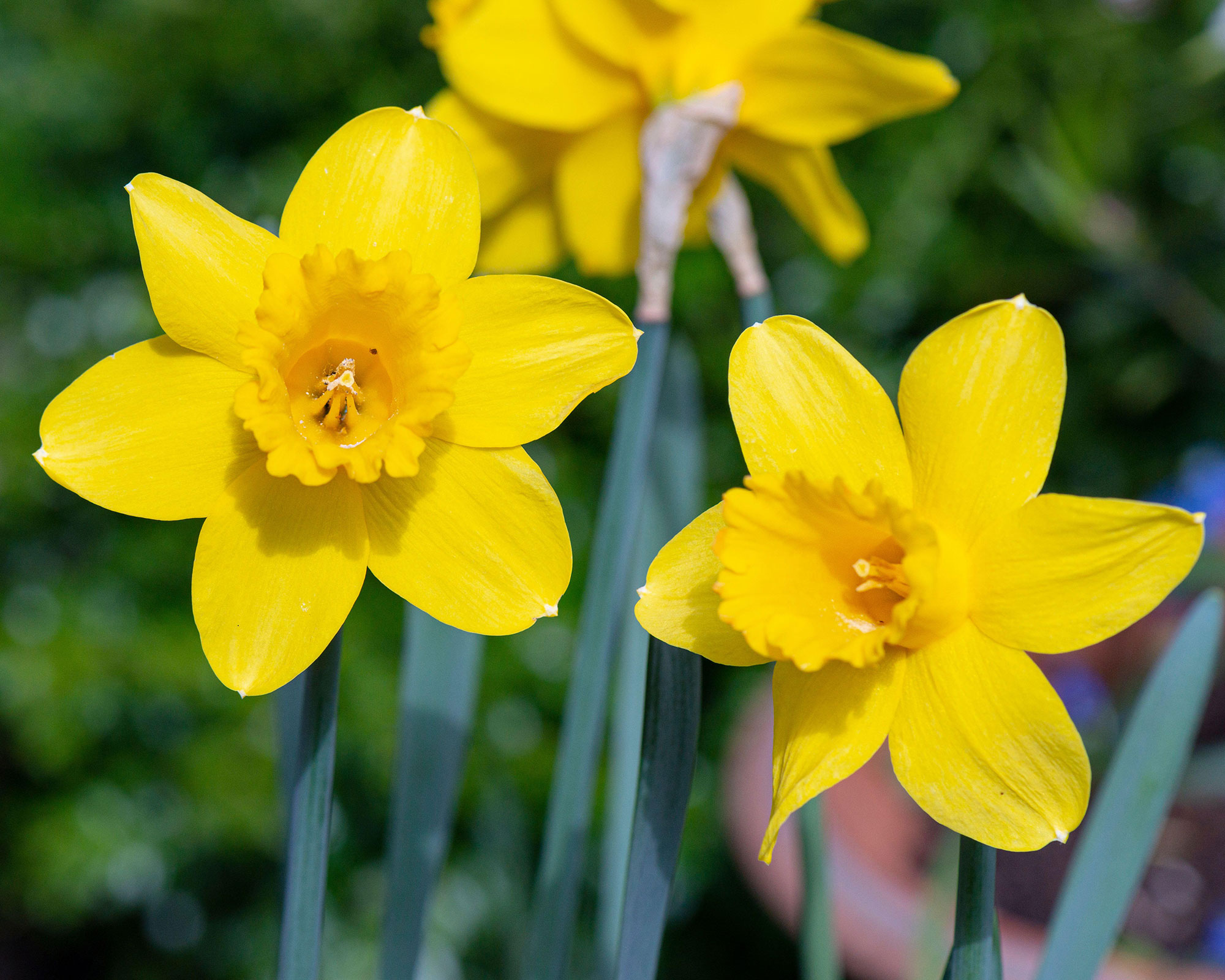
How do I know what kind of daffodils I have?
Daffodils are organized into 13 groups ('divisions' is the technical name). They differ mainly in the shape of the flowers and although a few have special requirements most widely grown varieties respond well to the same treatment.
It's not vital to know if the daffodils in your yard are Tazettas or Jonquils. What is more important is if you like them and are they doing well?
If you would like to plant more of the same type (perhaps for your latest bulb lasagne ideas) then knowing the group to which they belong can help. If you still have the tag that came with the bulbs when you bought them, this may tell you the group and will certainly tell you the variety. A quick online search will reveal the group.
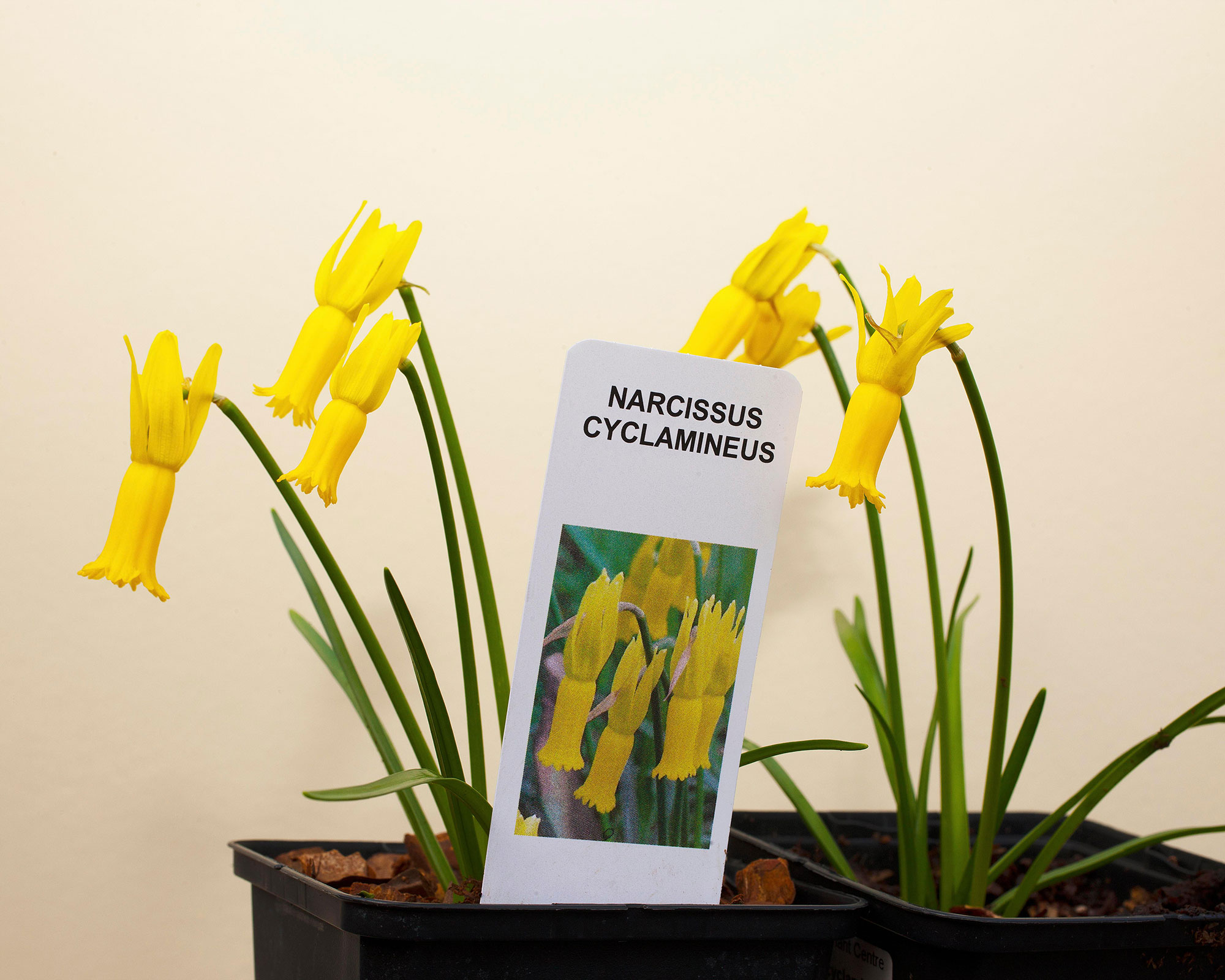
Are daffodils deer resistant?
Generally, yes daffodils are deer resistant plants. The New Jersey Agricultural Experiment Station, which tests plants for deer resistance and rates them in four categories, have assessed daffodils as 'rarely damaged'. This means exactly what it says.
I have seen clumps of daffodils in yards where deer have been grazing for decades although they will very occasionally bite off an individual flower.

Graham Rice is a garden writer who has won awards for his work online, and in books and magazines, on both sides of the Atlantic. He is a member of a number of Royal Horticultural Society committees and the recipient of the 2021 Garden Media Guild Lifetime Achievement Award.
